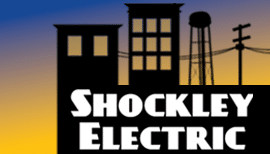If you’re a fan of watching summer storms in the south, you know that they often bring the stunning sounds and sights of thunder and lightning. Lightning strikes, while awesome to observe, can also cause damage to your home if it’s hit directly.
Although lightning strikes on homes are uncommon, they do happen and can cause substantial damage. Georgia ranked No. 2 behind Florida last year in number of homeowners insurance claims for lightning losses, according to the Insurance Information Institute.
While home insurance claims due to lightning are much less than claims for wind, hail or water damage, with an average cost per claim of $12,665, they are worth taking seriously.
Most residential homes don’t need lightning protection, but it can be warranted if:
- The house is in an area with a high frequency of lightning strikes.
- The house is tall.
- There are trees taller than the house within 10 feet of it.
How does a lightning rod protect my home?
First, understand that lightning rods are just one component of a complete lightning protection system. A lightning protection system is designed to intercept the high-voltage electrical energy—a single lightning bolt carries 100 million to 1 billion volts of electricity —and route it to ground, bypassing the home.
Some homeowner’s insurance plans provide credits for lightning protection, recognizing them as “protection for the entire external perimeter of the home.” It’s worth checking out if your policy allows for insurance credits for the following common lightning protection components:
- Lightning rods: The lightning rod itself is a copper rod mounted on or near the home designed to provide the least resistance path to ground, which electricity seeks out.
- Main conductors: These aluminum/copper braided cables connect lightning rods to ground.
- Grounds: These rods, driven deep into the earth, divert dangerous lightning current.
- Bonds: Bonds join metallic roofing components and grounded building systems to the main conductor, preventing lightning from jumping between objects.
- Tree protection: Because trees taller than your home increase strike risk, outfitting them with lightning protection can mitigate the danger.
- Surge protectors, suppressors and arrestors” Installed on your home’s electrical panel, these items offer added protection for your electrical system and expensive electronics against lightning.
As we wrote in the article 7 Things You Should Do Every Year to Keep Your Home’s Electrical System Working Properly, reviewing your home’s surge protection is a task you should undertake annually.
Preparing for lightning strikes: What you can do
Some simple and inexpensive steps you can take to protect your home from damage from a lightning strike include:
- Install UL-listed surge protectors specially designed for electrical strikes. Most regular power strips are not designed for reliable lightning strike protection.
- Unplug expensive electronics during storms or while away. Unplug TVs and computers if a storm is approaching or if you’re going to be away from home for an extended period. House wiring is a direct path from the lightning strike to these devices.
Call a professional electrician to address these items:
- Protect exposed wires and plumbing that enter the home. An electrician can install protective devices where your services enter the home that act as shunts to ground.
- Protect gas plumbing inside the home with proper grounding. While black iron pipe is relatively safe, many newer homes were built using Corrugated Stainless Steel Tubing (CSST) for gas lines, which can be prone to puncture and gas leaks.
- Protect the structure with a lightning protection system. As we discussed above, the idea of these systems is to divert the electrical energy of a lightning strike to the ground, protecting both the structure and the contents of the house.
While it’s not common to experience home lightning strikes, the damage that can be caused means homeowners should investigate whether a home lightning protection system makes sense.
How Can We Help?
At Shockley Electric, we address important home safety issues such as power surges, faulty electrical wiring and potential fire hazards when we do electrical preventive maintenance in homes or commercial buildings.
We are licensed, trained, and skilled in safety-proofing your home, and we are committed to the safety and well-being of our customers.
If you are experiencing electrical problems in your home or aren’t sure if your home is protected from electrical hazards, schedule an in-home estimate or appointment with us today. Fill out our form or call us now for a free estimate!

